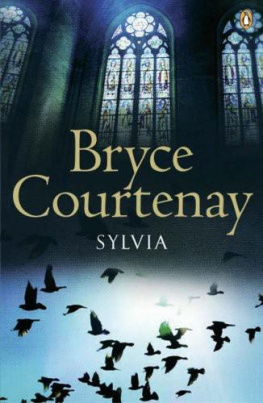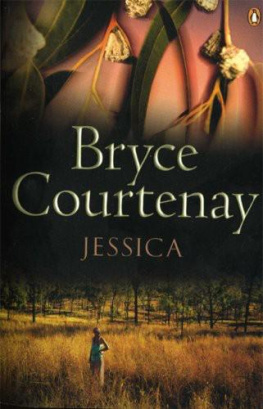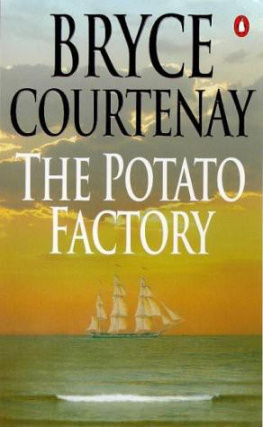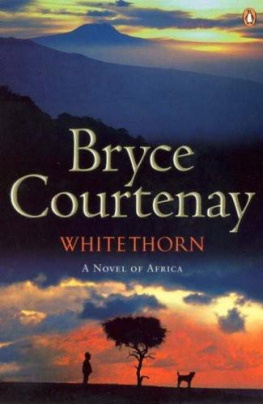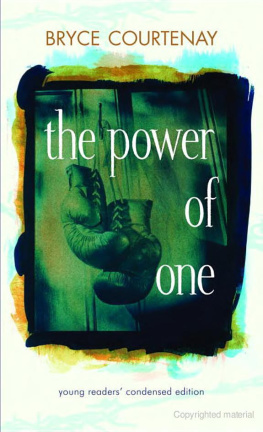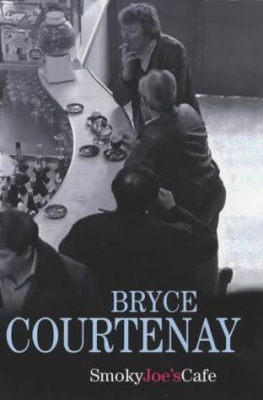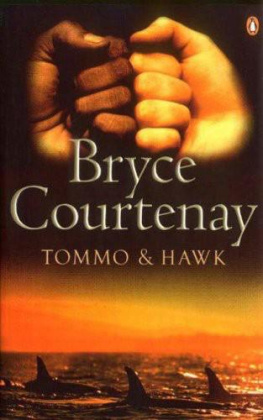Bryce Courtenay - Solomons Song
Here you can read online Bryce Courtenay - Solomons Song full text of the book (entire story) in english for free. Download pdf and epub, get meaning, cover and reviews about this ebook. year: 1999, genre: Detective and thriller. Description of the work, (preface) as well as reviews are available. Best literature library LitArk.com created for fans of good reading and offers a wide selection of genres:
Romance novel
Science fiction
Adventure
Detective
Science
History
Home and family
Prose
Art
Politics
Computer
Non-fiction
Religion
Business
Children
Humor
Choose a favorite category and find really read worthwhile books. Enjoy immersion in the world of imagination, feel the emotions of the characters or learn something new for yourself, make an fascinating discovery.
- Book:Solomons Song
- Author:
- Genre:
- Year:1999
- Rating:4 / 5
- Favourites:Add to favourites
- Your mark:
- 80
- 1
- 2
- 3
- 4
- 5
Solomons Song: summary, description and annotation
We offer to read an annotation, description, summary or preface (depends on what the author of the book "Solomons Song" wrote himself). If you haven't found the necessary information about the book — write in the comments, we will try to find it.
Solomons Song — read online for free the complete book (whole text) full work
Below is the text of the book, divided by pages. System saving the place of the last page read, allows you to conveniently read the book "Solomons Song" online for free, without having to search again every time where you left off. Put a bookmark, and you can go to the page where you finished reading at any time.
Font size:
Interval:
Bookmark:
Solomon's Song
Bryce Courtenay
Bryce Courtenay 1999
Version 1.0
For my grandsons Ben and Jake Courtenay
Arms and the Boy
Let the boy try along this bayonet-blade
How cold steel is, and keen with hunger of blood;
Blue with all malice, like a madman's flash;
And thinly drawn with famishing for flesh.
Lend him to stroke these blind, blunt bullet-leads
Which long to nuzzle in the hearts of lads,
Or give him cartridges of fine zinc teeth,
Sharp with the sharpness of grief and death.
For his teeth seem for laughing round an apple.
There lurk no claws behind his fingers supple;
And God will grow no talons at his heels,
Nor antlers through the thickness of his curls.
- Wilfred Owen, 1918
Book One
Chapter One
What Happened toTommo
Sydney 1861
On a dull early morning with the cumulus clouds over the Headsthreatening rain, roiling and climbing, changing patterns and darkening at thecentres, the incoming tide washes a body onto Camp Cove, a small inner-harbourbeach within Port Jackson which is becoming increasingly known as SydneyHarbour.
Paddy Doyle, the shipping telegraph operator stationed at South Head,out with his dog hears its persistent and, what seems to his ear, urgentbarking coming from the beach below him. He makes his way down the pathway ontothe small jetty to see his black mongrel yapping beside what, even at adistance, is plainly a human body lying high up on the wet sand.
Doyle, a stout man not given to exertion, hesitates a moment, thenjumps the eighteen inches from the jetty onto the sand and breaks into a clumsytrot, the sand squeaking and giving way under his boots. Commonsense tells himno amount of hurrying will make a difference, but death has a haste thatignores the good sense of walking slowly on a sultry morning. He is puffingheavily by the time he arrives at the wet bundle of wool and limbs from whichtrail several long ribbons of translucent iodine-coloured seaweed.
Immediately he sees that those parts of the body not protected byclothing are badly decomposed and much pecked about by gulls, crabs, sea liceand other scavengers of the deep. But not until he comes right up to it does herealise the body is missing a head.
The neck of the dead man protrudes from a dark woollen coat, agrotesque stump, ragged at the edges, torn about by the popping mouths ofcountless small fish. It is an aperture made less grisly by the cleansingeffect of the salt water but more macabre by its bloodless appearance. It lookslike the gape of some prehensile sea plant designed to trap and feed on smallfish and tiny molluscs rather than something made of human flesh and blood.
Paddy, an ex-convict, brought to New South Wales on the barque, Eden,the last transport of convicts to Sydney in November 1840, thinks ofhimself as a hard man. But twenty years of half-decent living have increasedthe size of his girth and heightened his sensibilities and he vomits into thesand.
After a fair endurance of spitting and gagging he rinses his mouth inthe salt wash and stands erect again, kicking the sand with the toe of hisright boot to cover the mess he's made at his feet.
The sun has broken through a break in the clouds and almost immediatelyblowflies buzz around the corpse. A sickly stench starts to rise from the body,but with his belly emptied of his breakfast gruel, Doyle is now better able towithstand the smell and he squats down to make a more thorough examination.
A narrow leather thong around the base of the headless neck cuts deepinto the swollen flesh and disappears inside the neck of a woollen vest. Doyle,reverting to his darker instincts, tugs tentatively at the cord. At first thereis some resistance, then a small malachite amulet, a Maori Tiki, is revealed.
Doyle, like all past convicts, is deeply superstitious and is alarmedby the presence of an amulet known to ward off evil spirits and put a curse onthose who harm its wearer. He hurriedly tucks it back under the wet vest,afraid now even to have touched it. Without thinking, he rubs the palm of theoffending hand in the wet sand to cleanse it, then crossing himself he mutters,'Hail Mary, Mother of God, protect me.'
The body is that of a white male of unusually small stature. Thefingers of both his hands are clenched to form puffy, clublike fists. Whetherfrom the sudden heat of the sun or the drying out of the corpse, the right handbegins to open and Doyle observes that the nails have continued to grow afterdeath and are deeply embedded into the fleshy upper part of the dead man'spalm. As the fingers unlock and open there is no sign of blood oozing from thefissures the nails have made. Each finger now wears a hooked talon with thefinger pads puckered and raised from the immersion in sea water, so that theskin surface seems to be covered by nests of tiny white worms.
The nails are smooth and clean with no cuts or scars nor is there anypermanently ingrained dirt etched into the lines on the palms to indicate a manaccustomed to physical work. The skin on his arms is bluish-white from the seawater, but shows no signs of having ever been exposed to the sun. 'Some sort oftoff,' Doyle thinks, 'no doubt up to no good and come to a sticky and untimelyend, good riddance. Still an' all, choppin' off his 'ead's goin' a bit bloodyfar!'
Later, when he has pulled off his boots and placed them on the stonesteps of his hut to dry and dusted the sand from his feet, he telegraphs Sydneyto report the headless corpse. Then, in what Paddy thinks is an amusingappendage to his message, he taps out, Best get a move on it don't take longfor them blowflies to lay their maggot eggs.
Two hours later, with the threatening clouds now well out to sea andthe sun hot as hades in a clear blue sky, a steam pinnace from the policemooring at Circular Quay with two police constables aboard puffs up to the CampCove jetty to claim the body for the Pyrmont morgue.
While searching the corpse, the morgue attendant, observed closely bySenior Detective Darcy O'Reilly of the Darlinghurst Police Station, discovers asmall leather wallet inside the jacket. It contains four pounds and severalpersonal calling cards which identify the headless man as Tommo X Solomon.
Detective O'Reilly immediately sends a constable to Tucker & Co. toinform Hawk Solomon that he is required at the city morgue to identify what maybe the remains of his brother.
Hawk, at Mary's instigation, had reported Tommo missing in case any ofMr Sparrow's lads might have seen him entering his lodgings on the night ofMaggie's death and declared his presence to the police.
A further search of the victim's clothing reveals a deck of DeLaruecards, the kind generally used by professional gamblers of a superior status.Finally, a gold hunter watch, with the ace of spades enamelled on its outer lidand a sovereign hanging from its fob chain, is discovered in a buttoned-downpocket of his weskit. It has stopped at twenty minutes past ten o'clock. SeniorDetective O'Reilly writes this down as the presumed time of death and thenpockets the watch. The corpse is left clothed for the pathologist to examineand is lifted onto the zinc dissecting table in preparation for the autopsy bythe Chief Government Medical Officer, William McCrea M.D., who will closelyexamine the clothes before removal, noting any tears or stains that may help todefine the method of death.
Conscious of the corpse's advanced state of decomposition Dr McCrealoses no time presenting his findings to the coroner, Mr Manning TurnbullNoyes, known in the magistrates courts as M. T. Noyes and by the hoi polloi as'Empty Noise'.
The hearing and its immediate aftermath is best summed up by thefollowing day's Sydney Morning Herald report on the murder by itspopular senior crime reporter, Samuel Cook. Although Mr Cook's name is not usedin the paper his style is easily recognised by his many readers who know himfor his fearless reportage. He enjoys their respect for his ability to askawkward questions which have a habit of greatly embarrassing nobs andgovernment officials of every rank. Cook has even been known to take on thegovernor when a wealthy merchant of dubious reputation was included in theQueen's Honours List. There are some who believe he wouldn't back down to theyoung Queen Victoria herself.
Next pageFont size:
Interval:
Bookmark:
Similar books «Solomons Song»
Look at similar books to Solomons Song. We have selected literature similar in name and meaning in the hope of providing readers with more options to find new, interesting, not yet read works.
Discussion, reviews of the book Solomons Song and just readers' own opinions. Leave your comments, write what you think about the work, its meaning or the main characters. Specify what exactly you liked and what you didn't like, and why you think so.


